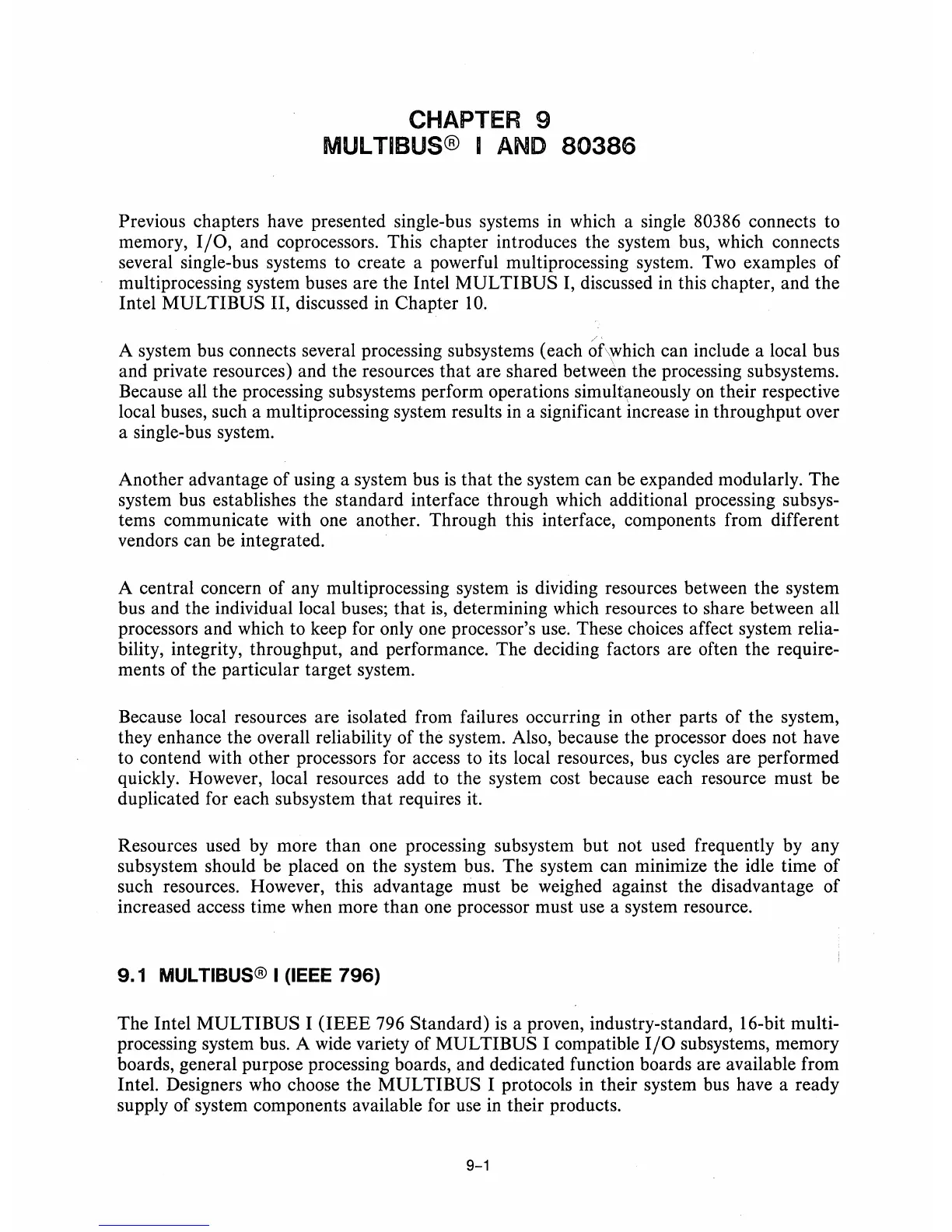CHAPTER 9
MUL
TIBUS® I
AND
80386
Previous chapters have presented single-bus systems
in
which a single 80386 connects to
memory,
I/O,
and coprocessors. This chapter introduces the system bus, which connects
several single-bus systems to create a powerful multiprocessing system.
Two
examples of
multiprocessing system buses are the Intel
MULTIBUS I, discussed in this chapter, and the
Intel
MUL
TIBUS II, discussed
in
Chapter
10.
/'
A system bus connects several processing subsystems (each of\which can include a local bus
and private resources) and the resources that are shared
betwe~n
the processing subsystems.
Because all the processing subsystems perform operations
simulf~neously
on
their respective
local buses, such a multiprocessing system results in a significant increase
in
throughput over
a single-bus system.
Another advantage of using a system bus
is
that the system can be expanded modularly. The
system bus establishes the standard interface through which additional processing
subsys-
tems communicate with one another. Through this interface, components from different
vendors can be integrated.
A central concern of any multiprocessing system
is
dividing resources between the system
bus and the individual local buses; that
is,
determining which resources to share between all
processors and which to keep for only one processor's
use.
These choices affect system relia-
bility, integrity, throughput, and performance. The deciding factors are often the require-
ments of the particular target system.
Because local resources are isolated from failures occurring
in
other parts of the system,
they enhance the overall reliability of
the system. Also, because the processor does not have
to contend with other processors for access to its local resources, bus cycles are performed
quickly. However, local resources add
to
the system cost because each resource must be
duplicated for each subsystem that requires it.
Resources used by more than one processing subsystem but not used frequently by any
subsystem should be placed on the system bus. The system can minimize the idle time of
such resources. However, this advantage must be weighed against the disadvantage of
increased access time when more than one processor must use a system resource.
9.1
MUL
TIBUS® I (IEEE
796)
The Intel MULTI BUS I
(IEEE
796 Standard)
is
a proven, industry-standard, 16-bit multi-
processing system
bus.
A wide variety of MULTIBUS I compatible
I/O
subsystems, memory
boards, general purpose processing boards, and dedicated function boards are available from
Intel. Designers
who
choose the
MUL
TIBUS I protocols
in
their system bus have a ready
supply of system components available for use in their products.
9-1

